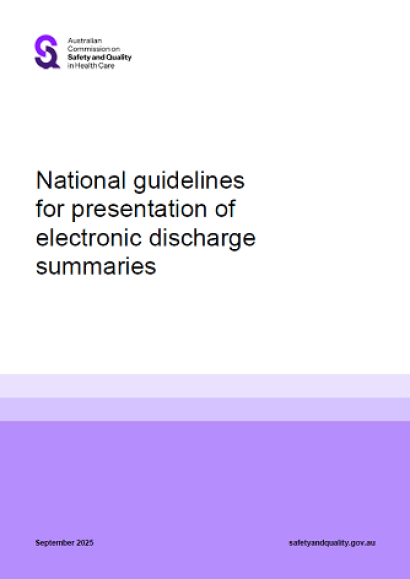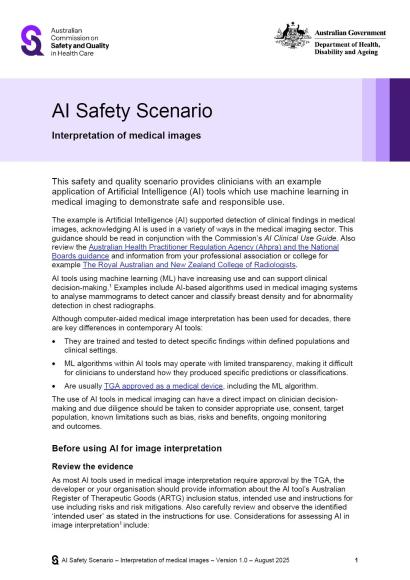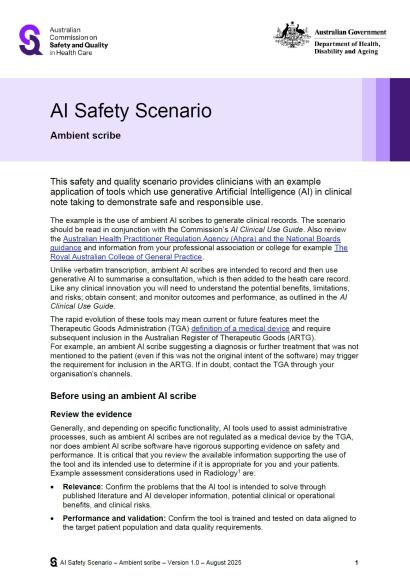e-Health safety
The Commission contributes to e-Health safety by optimising safety and quality in the rollouts of digital clinical systems. It focuses on hospital medication management programs and discharge summaries, and uses e-Health initiatives to improve the safety and quality of health care, including antimicrobial stewardship.
New updates and resources
National guidelines for presentation of electronic discharge summaries
Artificial Intelligence
Artificial Intelligence
Real-time prescription monitoring
Real-time prescription monitoring
Information about Real-time prescription monitoring (RTPM) in Australia including clinician resources to support its effective use in clinical practice.
National guidelines for presentation of electronic discharge summaries
Artificial Intelligence
Artificial Intelligence
Real-time prescription monitoring
Real-time prescription monitoring
Information about Real-time prescription monitoring (RTPM) in Australia including clinician resources to support its effective use in clinical practice.
Programs and resources
The Commission’s e-Health safety programs include:
The Commission works in collaboration with states and territories, the private hospital and primary care sectors, the Australian Digital Health Agency (the Agency), and other national bodies to promote the safety and quality agenda within national digital programs.



